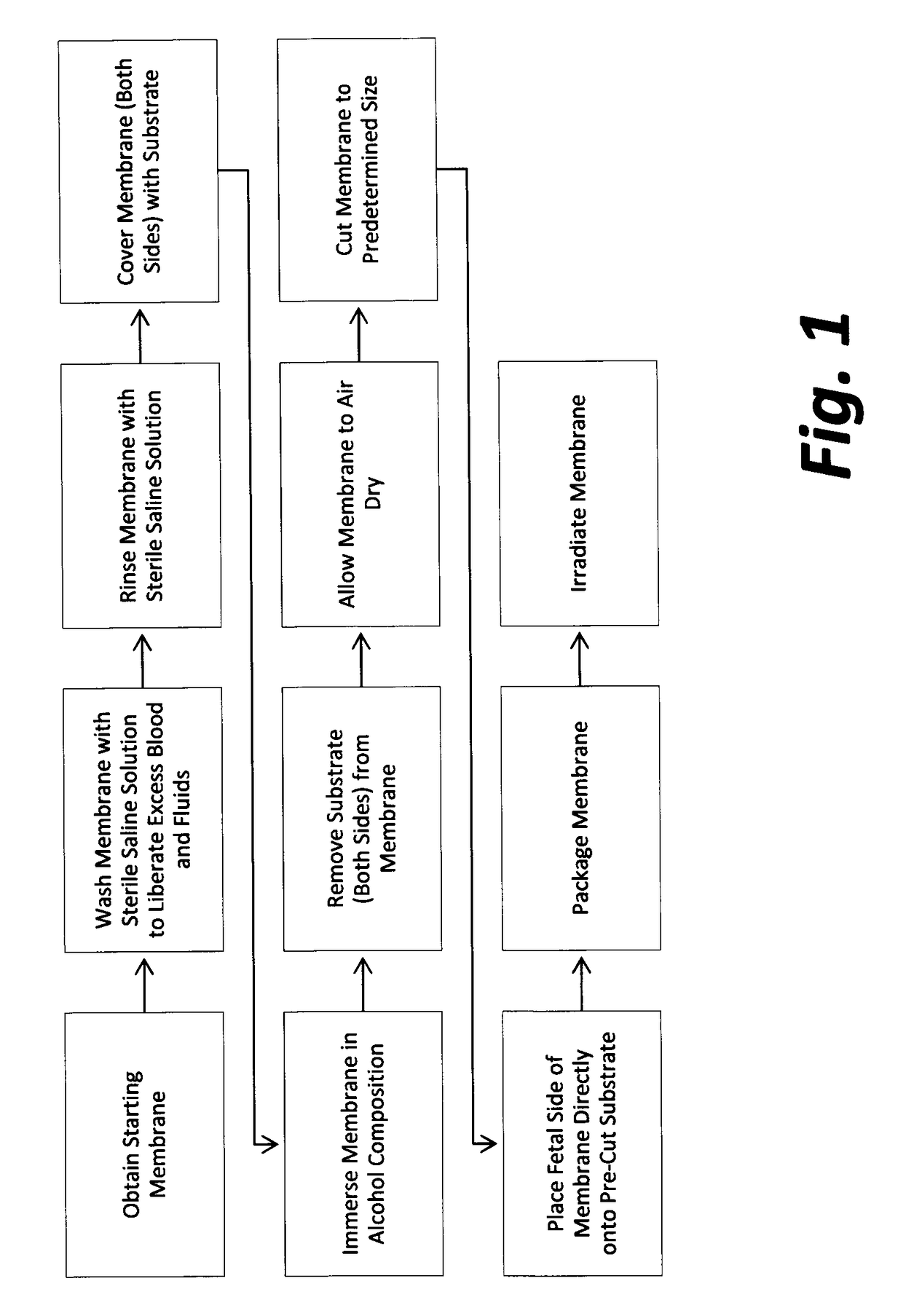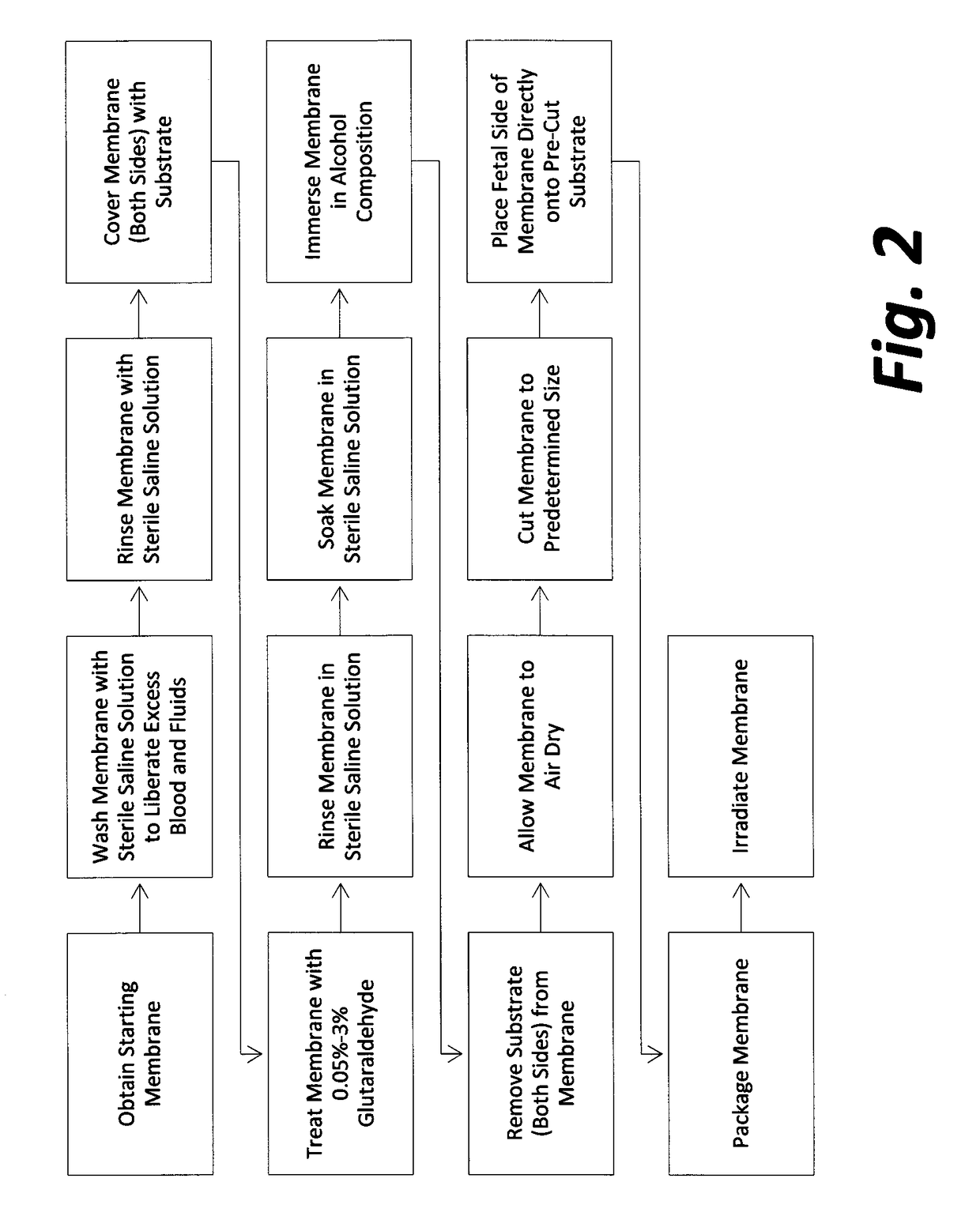Cardiothoracic construct and methods of use
a cardiac and construct technology, applied in the field of cardiac constructs, can solve the problems of cardiac tamponade and death, heart at risk of catastrophic injury, patient at risk of complications, etc., and achieve the effects of preventing fibrous scar formation, preventing adhesion formation, and reducing or preventing clot formation
- Summary
- Abstract
- Description
- Claims
- Application Information
AI Technical Summary
Benefits of technology
Problems solved by technology
Method used
Image
Examples
example 1
[0074]Representative samples of final product from four production lots #1, #2, #3 and #4 manufactured according to the methods of FIG. 2 were tested for residual glutaraldehyde and residual ethanol by gas chromatography, analytical methods EPA 8015M, CAS No. 111-30-8 and EPA 8260B, CAS No. 64-17-5, respectively. Samples were sent to Nelson Laboratories, Inc., 6280 South Redwood Road Salt Lake City, Utah 84123, a GLP qualified microbiology laboratory registered with the FDA and third-party accredited to ISO 17025 standards. The results are summarized in Table 1 and Table 2 below.
[0075]Samples from four production lots #1, #2, #3 and #4 were tested for residual glutaraldehyde by gas chromatography, analytical methods EPA 8015M, CAS No. 111-30-8 as follows:
[0076]Three representative samples of final product (2 cm×2 cm each) from production lot #1 included amniotic membranes that had been treated with a 0.1% glutaraldehyde composition for a period of 15 minutes and had been immersed in...
example 2
[0111]Three representative samples of final product for each of three production lots manufactured according to the methods of FIG. 1 were tested for residual ethanol by gas chromatography, analytical method EPA 8260B, CAS No. 64-17-5. Samples were sent to Nelson Laboratories, Inc., 6280 South Redwood Road Salt Lake City, Utah 84123, a GLP qualified microbiology laboratory registered with the FDA and third-party accredited to ISO 17025 standards.
[0112]The three samples submitted for testing from production lot #5 (2 cm×3 cm; 2 cm×3 cm; and 1.5 cm×2 cm) included amniotic membranes that had been immersed in an alcohol composition comprising 95.5% ethanol for a period of 110 hours. The three samples submitted for testing from production lot #6 (2 cm×3 cm each) included amniotic membranes that had been immersed in an alcohol composition comprising 95.5% ethanol for a period of 25.5 hours. The three samples submitted for testing from production lot #7 (2 cm×3 cm each) included amniotic m...
PUM
 Login to View More
Login to View More Abstract
Description
Claims
Application Information
 Login to View More
Login to View More - R&D
- Intellectual Property
- Life Sciences
- Materials
- Tech Scout
- Unparalleled Data Quality
- Higher Quality Content
- 60% Fewer Hallucinations
Browse by: Latest US Patents, China's latest patents, Technical Efficacy Thesaurus, Application Domain, Technology Topic, Popular Technical Reports.
© 2025 PatSnap. All rights reserved.Legal|Privacy policy|Modern Slavery Act Transparency Statement|Sitemap|About US| Contact US: help@patsnap.com



